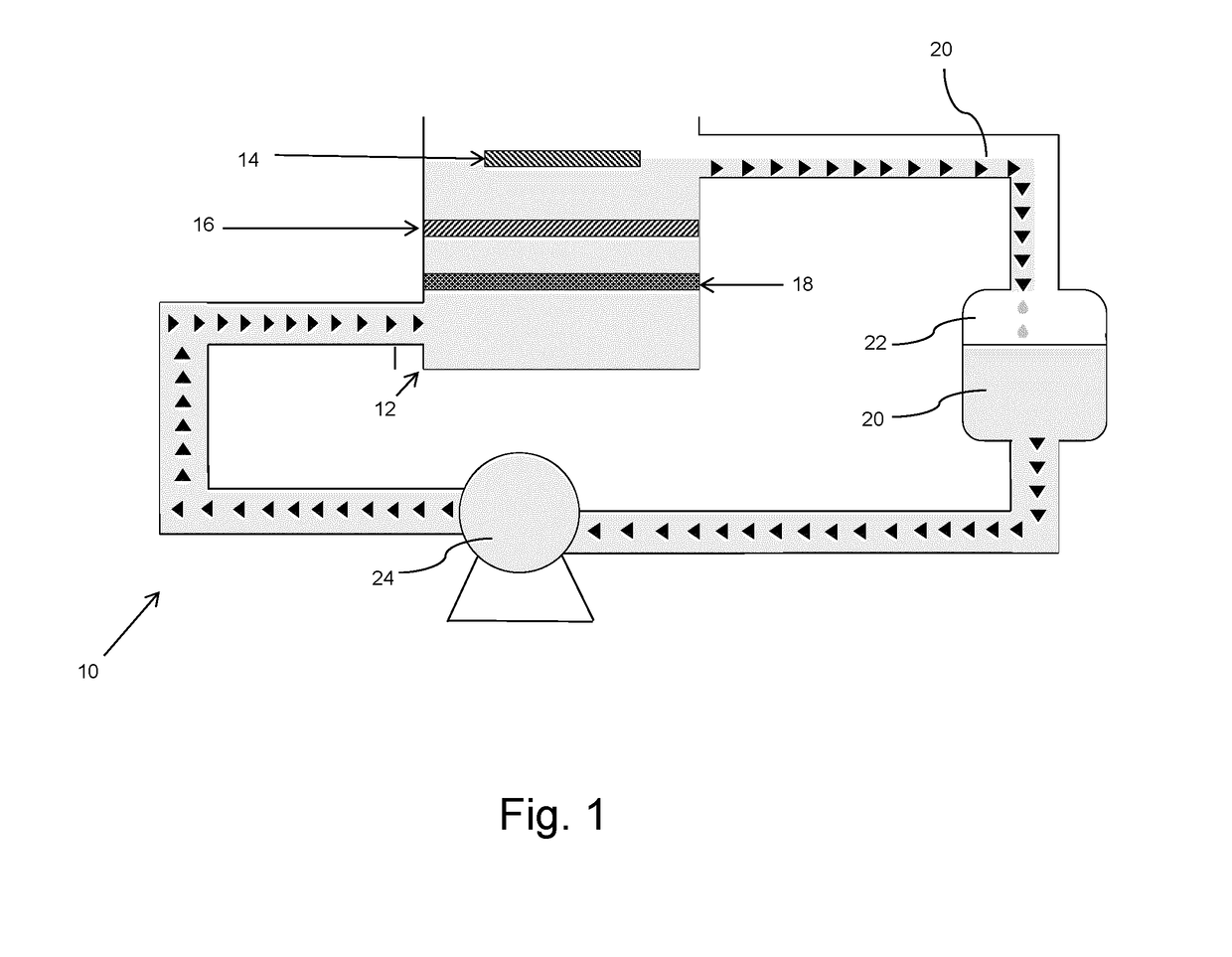Horizontal tri-electrode single flow zinc-air battery with a floating cathode
a zinc-air battery and floating cathode technology, applied in the direction of primary cells, fuel cells, fuel and secondary cells, etc., can solve the problems of affecting the commercialization of rechargeable zinc-air batteries, carbon is corroded, and the carbon contained in the cathode is corroded, so as to avoid the formation of zinc dendrites
- Summary
- Abstract
- Description
- Claims
- Application Information
AI Technical Summary
Benefits of technology
Problems solved by technology
Method used
Image
Examples
example a
[0049]A horizontally configured tri-electrode single flow zinc-air battery with a floating cathode was prepared comprising: a piece of 10 cm×10 cm Ni-foam as the charge cathode; a piece of 9 cm×9 cm catalytic air electrode as the discharge cathode; a piece of 10 cm×10 cm copper foam as the anode; an electrolyte comprising 8 M KOH and 0.8 M K2Zn(OH)4; and an electrolyte flow system comprising a pump, a tank, and plastic tubes. The discharge cathode was supported by two flexible cables such that a first side was exposed to air and a second side, opposite the first side, was exposed to electrolyte.
[0050]The discharge cathode was prepared by mixing MnO2 (D50=5-10 um), activated carbon, Super P (carbon black), and PTFE (emulsion) in isopropanol to form a slurry. The mass ratios of each component was 32%:45%:15%:8%. The slurry was coated and pressed onto a piece of nickel foam, then dried in an oven. The electrode was roll pressed to a thickness of 0.5 mm, and heat pressed at 310° C. for ...
example b
[0053]A horizontally configured tri-electrode single flow zinc-air battery with a floating cathode was assembled as in Example A. The charge cathode was a piece of 0.2 mm thick stainless steel (316) mesh and the discharge cathode comprised MnO2 (D50=5-10 um), activated carbon, Super P (carbon black), and PTFE, the mass ratio of each component being 65%:22%:8%:5%. The anode was formed from a piece of stainless steel mesh. The electrolyte comprised 4M NaOH and 0.4 M Na2Zn(OH)4.
example c
[0054]A horizontally configured tri-electrode single flow zinc-air battery with a floating cathode was assembled as in Example A. The charge cathode was a piece of 0.2 mm thick stainless steel (316) mesh and the discharge cathode comprised of CoO2 (D50≤5 um), activated carbon, Super P (carbon black), and PTFE, the mass ratio of each component was 32%:45%:15%:8%. The anode was a piece of copper mesh. The electrolyte comprised 10 M KOH and 0.2 M K2Zn(OH)4.
PUM
 Login to View More
Login to View More Abstract
Description
Claims
Application Information
 Login to View More
Login to View More - R&D
- Intellectual Property
- Life Sciences
- Materials
- Tech Scout
- Unparalleled Data Quality
- Higher Quality Content
- 60% Fewer Hallucinations
Browse by: Latest US Patents, China's latest patents, Technical Efficacy Thesaurus, Application Domain, Technology Topic, Popular Technical Reports.
© 2025 PatSnap. All rights reserved.Legal|Privacy policy|Modern Slavery Act Transparency Statement|Sitemap|About US| Contact US: help@patsnap.com

